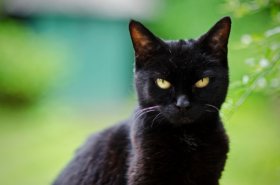
Black Cat Species
 Throughout history, black cats had a reputation that sometimes allowed them to be in the foreheads, but more often caused trouble.
Throughout history, black cats had a reputation that sometimes allowed them to be in the foreheads, but more often caused trouble.
They were considered to be the traitors of the poor, the servants of the devil, the werewolves, the beloved sub-criminal witches and, at all, extremely suspicious creatures.
There are also very few black cats left in the folklore, which would not have been seen in unsuccessful acts!
There's only one character coming to remember-- Felix's cat, who, despite the black paint, was positive...
Today, black cats- A major object during Halloween.
Felix's cat got a lot of popularity when he first showed up on the comic pages in 1920. Black cats appear in popular TVs and cinemas, they're made by stars, and no one else thinks they're terrible demons in cats.
 Black cats in history
Black cats in history
Although the references to black cats appeared throughout human history, the dark colours of black cats did not always speak of unhappy reputation.
In fact, in many cultures and ancient societies, black cats were considered to be special good luck signs.
- The ancient Egypt: People read the goddess of Bastet, the goddess of the cat, representing prosperity and truth. The baset was often portrayed as a woman with a cat head, often dark or black.
To benefit from the goddess, Egyptian families held black cats as domestic animals. And if someone killed a cat or hurt her, the penalty was as severe as if he hurt his own house!
- England and Ireland: The Celtic Folklore contains stories about Cat Sith, a mythological creature that took the form of a large black cat with a white stain on his chest. His reputation was double. While some thought Cat Sith was a faety of cats and could have asked for gifts, others thought that the creature was a witch's assistant.









